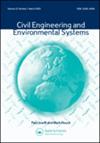基于元胞自动机的多目标优化:在水库多用途运行中的应用
IF 1.1
3区 工程技术
Q3 ENGINEERING, CIVIL
引用次数: 6
摘要
摘要本文提出了一个加权元胞自动机(CA)来解决考虑供水和发电两个目标的水库调度优化问题。采用数学推导的更新规则,提高了算法的效率。利用著名的加权法将双目标问题转化为单目标问题,导出了问题的更新规则。采用该方法对伊朗的Dez油藏进行了60个月、120个月、240个月和480个月的作业周期,以测试该方法在不同规模的作业问题中的性能。并与非支配排序遗传算法(non- dominant sorting genetic algorithm, NSGAII)的性能进行了比较。结果表明,与NSGAII相比,该方法在产生可比较结果的同时具有较高的效率。这与CA方法与现有的单目标优化问题的进化算法的优越效率和可比有效性的早期发现一致。本文章由计算机程序翻译,如有差异,请以英文原文为准。
Multi-objective optimisation using cellular automata: application to multi-purpose reservoir operation
ABSTRACT In this paper, a weighted cellular automata (CA) is proposed to solve bi-objective reservoir operation optimisation problem considering two objectives of water supply and hydropower production. A mathematically derived updating rule is used contributing to the efficiency of the proposed CA method. The updating rule of the problem is derived by converting the bi-objective problem to a single-objective problem using the well-known weighting method. The proposed method is used to operate the Dez reservoir in Iran over various operation periods of 60, 120, 240 and 480 months to test the performance of the method for operational problems of different scales. Performance of the method is also compared with that of a non-dominated sorting genetic algorithm (NSGAII) as one of the most popular multi-objective evolutionary algorithms. The results indicate that the proposed method is highly efficient compared to the NSGAII while producing comparable results. This is in line with the early findings of superior efficiency and comparable effectiveness of the CA method with the existing evolutionary algorithms for single objective optimisation problems.
求助全文
通过发布文献求助,成功后即可免费获取论文全文。
去求助
来源期刊

Civil Engineering and Environmental Systems
工程技术-工程:土木
CiteScore
3.30
自引率
16.70%
发文量
10
审稿时长
>12 weeks
期刊介绍:
Civil Engineering and Environmental Systems is devoted to the advancement of systems thinking and systems techniques throughout systems engineering, environmental engineering decision-making, and engineering management. We do this by publishing the practical applications and developments of "hard" and "soft" systems techniques and thinking.
Submissions that allow for better analysis of civil engineering and environmental systems might look at:
-Civil Engineering optimization
-Risk assessment in engineering
-Civil engineering decision analysis
-System identification in engineering
-Civil engineering numerical simulation
-Uncertainty modelling in engineering
-Qualitative modelling of complex engineering systems
 求助内容:
求助内容: 应助结果提醒方式:
应助结果提醒方式:


